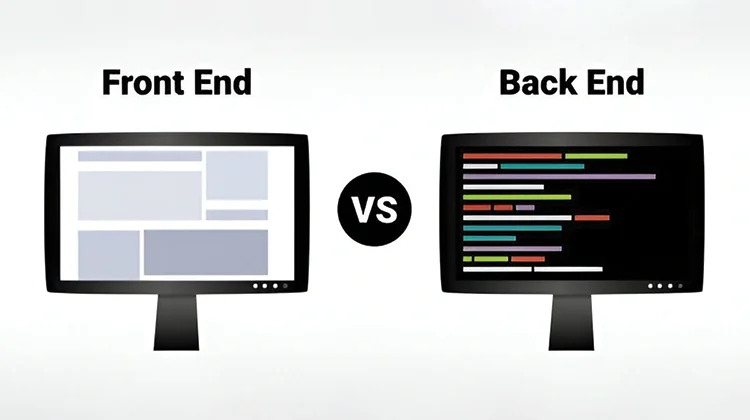
Client-Side vs. Server-Side Rendering: Pros, Cons, and the Impact on Your Website
In the world of web development, rendering is the invisible hand that shapes the user experience (UX) and search engine optimization (SEO). It dictates how web pages come to life in a user’s browser, influencing everything from first load times to content accessibility. Two primary rendering approaches dominate the landscape: client-side rendering (CSR) and server-side rendering (SSR). Selecting the right method for your project hinges on a clear understanding of its strengths and weaknesses.
This comprehensive guide dives deep into CSR and SSR, exploring their inner workings, advantages, and drawbacks. By the end, you’ll be equipped to make an informed decision that optimizes your website for speed, interactivity, and discoverability in search engines.
Client-Side Rendering: A User-Centric Approach
CSR prioritizes a smooth and interactive user experience. When a user requests a page, the server delivers a basic HTML structure, akin to a blank canvas. This first HTML might contain minimal content or even just placeholders. The real magic happens in the user’s browser. The downloaded HTML includes JavaScript code, which, once executed, populates the content and drives the interactive elements on the page
The Allure of CSR: A User-First Philosophy
Enhanced User Experience: CSR excels at fostering a fluid and dynamic experience. Since user interactions occur within the browser, users perceive faster response times and a more seamless flow. This is true for actions that don’t require extensive server communication, such as updating a shopping cart or toggling menus.
Reduced Server Load: By delegating content generation to the user’s browser via JavaScript, CSR minimizes the workload on the server. This can be a significant advantage for high-traffic websites, where a traditional server-side rendering approach might struggle to keep up with demand.
Scalable Backend: With CSR, the backend functions as a data API, delivering the raw materials (data) that the JavaScript on the client side uses to build the last page. This simplifies the backend structure, leading to easier maintenance and scaling as your application grows.
The Shadows of CSR: Potential Drawbacks to Consider
Slower First Load Time: While user interactions might feel faster with CSR, the first-page load can be slower, especially for users with limited bandwidth. This is because the browser needs to download and execute the JavaScript code before the content becomes visible.
SEO Challenges: Search engines rely on the content they can crawl and index. Since a significant part of the content on a CSR website might be generated by JavaScript, it can pose challenges for search engine crawlers, hindering SEO efforts. Techniques like pre-rendering can help mitigate this issue, but they add complexity.
Limited Functionality without JavaScript: If a user has JavaScript disabled in their browser, they might meet a broken or incomplete website. While this scenario is becoming less common, it’s still a factor to consider, especially for websites that cater to a diverse audience with varying technical preferences.
Server-Side Rendering: Prioritizing Speed and SEO
SSR takes a more traditional approach to web page rendering. When a user requests a page, the server takes center stage. It generates the full HTML content, including dynamic elements, on its turf. This complete HTML is then delivered to the user’s browser for rendering. In essence, the server does the heavy lifting upfront, ensuring the browser receives a fully formed page ready for immediate display.
The Benefits of SSR: A Strong Foundation for Success
Faster Initial Load Time: With SSR, the browser receives a fully rendered page, leading to a quicker initial load, especially for users with slower internet connections. Since the content is pre-generated on the server, there’s no need for the browser to download and execute additional JavaScript before displaying the page.
SEO Friendly: Search engines can easily crawl and index all content delivered by the server, including dynamic elements. This is a significant advantage for SEO, as search engines rely heavily on content they can readily access and understand.
Accessibility: Even with JavaScript disabled, users will still see a basic version of the page content delivered by the server. This ensures accessibility for users with disabilities or those who choose to disable JavaScript for various reasons.
The Trade-offs of SSR: Potential Considerations
Increased Server Load: Generating HTML on the server for every request can be resource-intensive. This can impact scalability for high-traffic websites, potentially leading to higher server costs or performance bottlenecks.
Potential for Slower Interactions: Since updates on a server-side rendered page often require additional server requests, interactions might feel slightly less fluid compared to a pure CSR approach. This is because the browser needs to communicate with the server to fetch new data whenever the user interacts with an element. Techniques like code-splitting and server-sent events (SSE) can help mitigate this, but they add complexity to the development process.
Complex Backend Logic: Managing server-side rendering logic can add complexity to the backend development process. Compared to a simpler data API approach in CSR, SSR often requires additional code to handle data fetching, templating, and routing on the server side. This can increase development time and ongoing maintenance needs.
Hybrid Rendering: The Best of Both Worlds?
Neither CSR nor SSR is a one-size-fits-all solution. Many developers explore hybrid rendering approaches that leverage the strengths of both techniques. This can involve:
Server-Side Rendering for Initial Load: Render the initial page content on the server for a faster first impression and improved SEO.
Client-Side Rendering for Dynamic Updates: Use JavaScript to handle dynamic updates and user interactions for a smoother user experience after the initial load.
This hybrid approach requires careful planning and implementation, but it can be a powerful way to optimize website performance and user experience.
Choosing the Right Rendering Approach for Your Project
The ideal rendering approach depends on your project’s specific needs and priorities. Here’s a breakdown to help you navigate the decision:
• Choose CSR for:
Highly interactive web applications where user experience is paramount.
Websites with a large user base where scalability is a major concern.
Projects where a dynamic and fluid user experience is the primary focus.
• Choose SSR for:
SEO-focused websites with static content that relies heavily on search engine visibility.
Content-heavy applications like news websites or e-commerce platforms.
Projects where initial load time is crucial and users might have varying internet connection speeds.
Beyond the Binary: A Spectrum of Rendering Options
It’s important to remember that CSR and SSR represent opposite ends of the spectrum. Some various frameworks and libraries offer different levels of flexibility and control over the rendering process. Some popular options include:
Next.js: A popular React framework that excels at hybrid rendering, offering server-side rendering for initial pages and client-side hydration for a seamless user experience.
Nuxt.js: A Vue.js framework that emphasizes server-side rendering with built-in features for code-splitting and data fetching.
Gatsby: A static site generator that pre-renders content at build time, resulting in lightning-fast websites but limited flexibility for dynamic updates.
Conclusion: A Data-Driven Decision for Your Website
The choice between CSR and SSR is not a binary one. By understanding the strengths and weaknesses of each approach, you can make an informed decision that aligns with your project’s specific goals. Consider factors like target audience, SEO strategy, content type, and desired user experience. Utilize tools like website performance monitors and SEO audits to gather data on existing performance and inform your rendering choice.
Ultimately, the best rendering approach is the one that delivers the optimal balance between a smooth and dynamic user experience, strong SEO performance, and efficient server-side resource utilization for your unique website.





